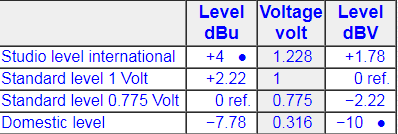Products Category
- FM Transmitter
- 0-50w 50w-1000w 2kw-10kw 10kw+
- TV Transmitter
- 0-50w 50-1kw 2kw-10kw
- FM Antenna
- TV Antenna
- Antenna Accessory
- Cable Connector Power Splitter Dummy Load
- RF Transistor
- Power Supply
- Audio Equipments
- DTV Front End Equipment
- Link System
- STL system Microwave Link system
- FM Radio
- Power Meter
- Other Products
- Special for Coronavirus
Products Tags
Fmuser Sites
- es.fmuser.net
- it.fmuser.net
- fr.fmuser.net
- de.fmuser.net
- af.fmuser.net ->Afrikaans
- sq.fmuser.net ->Albanian
- ar.fmuser.net ->Arabic
- hy.fmuser.net ->Armenian
- az.fmuser.net ->Azerbaijani
- eu.fmuser.net ->Basque
- be.fmuser.net ->Belarusian
- bg.fmuser.net ->Bulgarian
- ca.fmuser.net ->Catalan
- zh-CN.fmuser.net ->Chinese (Simplified)
- zh-TW.fmuser.net ->Chinese (Traditional)
- hr.fmuser.net ->Croatian
- cs.fmuser.net ->Czech
- da.fmuser.net ->Danish
- nl.fmuser.net ->Dutch
- et.fmuser.net ->Estonian
- tl.fmuser.net ->Filipino
- fi.fmuser.net ->Finnish
- fr.fmuser.net ->French
- gl.fmuser.net ->Galician
- ka.fmuser.net ->Georgian
- de.fmuser.net ->German
- el.fmuser.net ->Greek
- ht.fmuser.net ->Haitian Creole
- iw.fmuser.net ->Hebrew
- hi.fmuser.net ->Hindi
- hu.fmuser.net ->Hungarian
- is.fmuser.net ->Icelandic
- id.fmuser.net ->Indonesian
- ga.fmuser.net ->Irish
- it.fmuser.net ->Italian
- ja.fmuser.net ->Japanese
- ko.fmuser.net ->Korean
- lv.fmuser.net ->Latvian
- lt.fmuser.net ->Lithuanian
- mk.fmuser.net ->Macedonian
- ms.fmuser.net ->Malay
- mt.fmuser.net ->Maltese
- no.fmuser.net ->Norwegian
- fa.fmuser.net ->Persian
- pl.fmuser.net ->Polish
- pt.fmuser.net ->Portuguese
- ro.fmuser.net ->Romanian
- ru.fmuser.net ->Russian
- sr.fmuser.net ->Serbian
- sk.fmuser.net ->Slovak
- sl.fmuser.net ->Slovenian
- es.fmuser.net ->Spanish
- sw.fmuser.net ->Swahili
- sv.fmuser.net ->Swedish
- th.fmuser.net ->Thai
- tr.fmuser.net ->Turkish
- uk.fmuser.net ->Ukrainian
- ur.fmuser.net ->Urdu
- vi.fmuser.net ->Vietnamese
- cy.fmuser.net ->Welsh
- yi.fmuser.net ->Yiddish
Conversion: Voltage V to Voltage level Lu (dBu) and LV (dBV)
The origin of the index of dBu comes from "u = unloaded" and dBV comes from "V = 1 volt". Some say: The "u" in dBu implies that the load impedance is unspecified, unterminated, and is likely to be high.
What is dBu? A logarithmic voltage ratio with a reference voltage of V0 = 0.7746 volt ≡ 0 dBu
What is dBV? A logarithmic voltage ratio with a reference voltage of V0 = 1.0000 volt ≡ 0 dBV
The home recording level (consumer audio) of −10 dBV means 0.3162 volts, that is −7.78 dBu.
The studio recording level (pro audio) of +4 dBu means a voltage of 1.228 volts.
The maximum undistorted level of audio amplifiers is +18 dBu. In USA it is +24 dBu.
Domestic gear with a −10 dBV level is usually unbalanced. Studio gear with a +4 dBu level is always balanced. 0 VU = +4 dBu.
Scale: Level in dBu and dBV in comparison to the voltage in V


The level difference between +4 dBu studio level and −10 dBV consumer level is Δ L = 11.78 dB (12 dB).
The level difference between dBu level and dBV level is Δ L = 2.2 dB. 0 dBV equals 2.2 dBu or 0 dBu equals −2.2 dBV.
The conversion from level L(dBu) to voltage (volt) is V = 0.775 × 10(L/20).
The conversion from voltage V (volt) to level (dBu) is L = 20 × log (V/0.775).
All field quantities, like voltage or sound pressure arealways true RMS values, if not otherwise stated.
In mathematics, the root mean square (abbreviated RMS or rms), also known as the quadratic mean, is a statistical measure of the magnitude of a varying quantity.
For sinusodial voltages or currents with ohm's loads calculations can made easier with RMS = amplitude / √2

Level:
Voltage: 
Note - Comparing dBSPL and dBA: There is no conversion formula for measured dBA values to sound pressure level dBSPL or vice versa. Also you cannot convert "dBA to volts" and vice versa. Conversion is only possible for measuring one single frequency. For sinusodial voltages or currents with ohm's loads calculations can made easier with RMS = amplitude / √2
You May Also Like:
How to Read dB and dBm and to Convert Back and Forth !
Power and Amplitude: Watts, Volts and Referenced Decibels
How to Calculate Decibels of Different Types?

